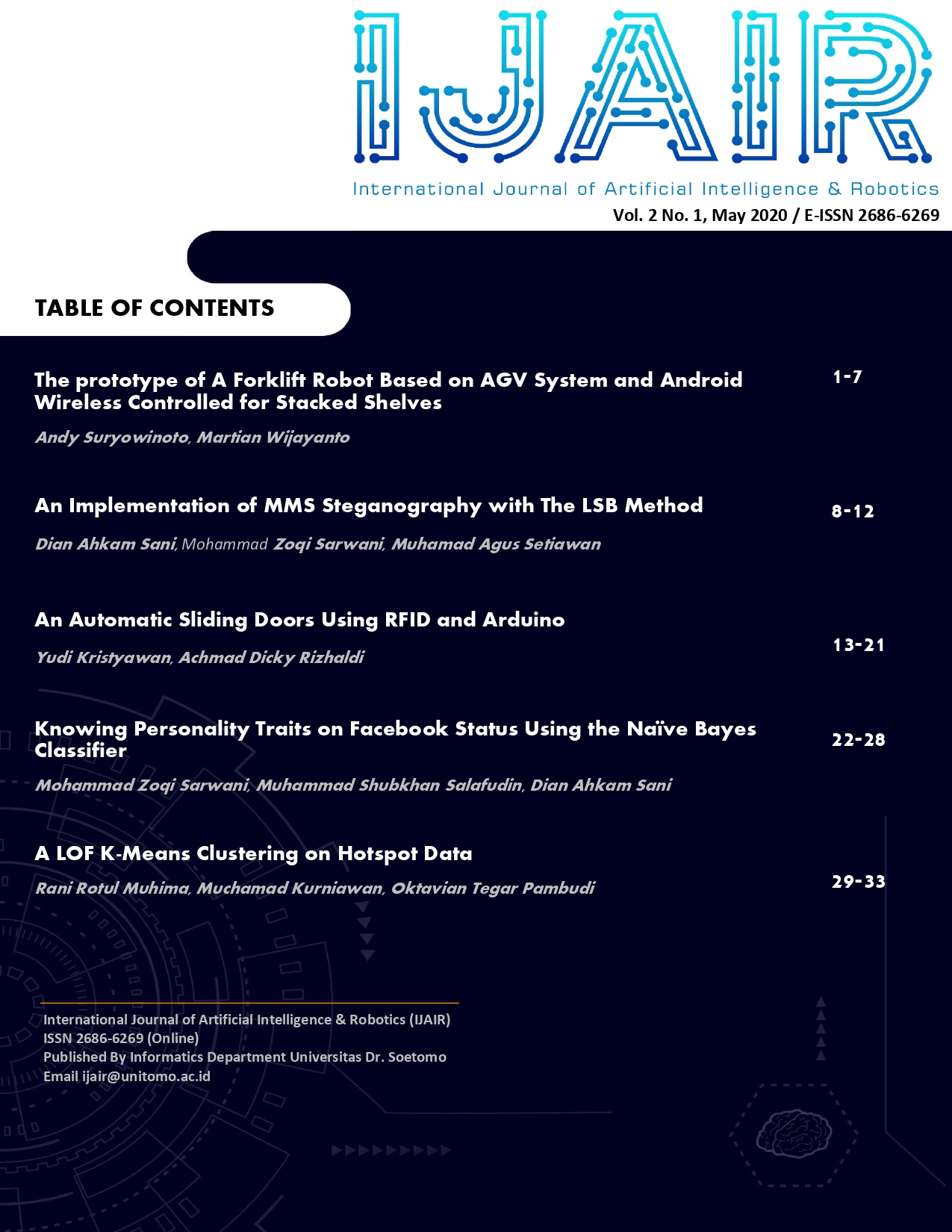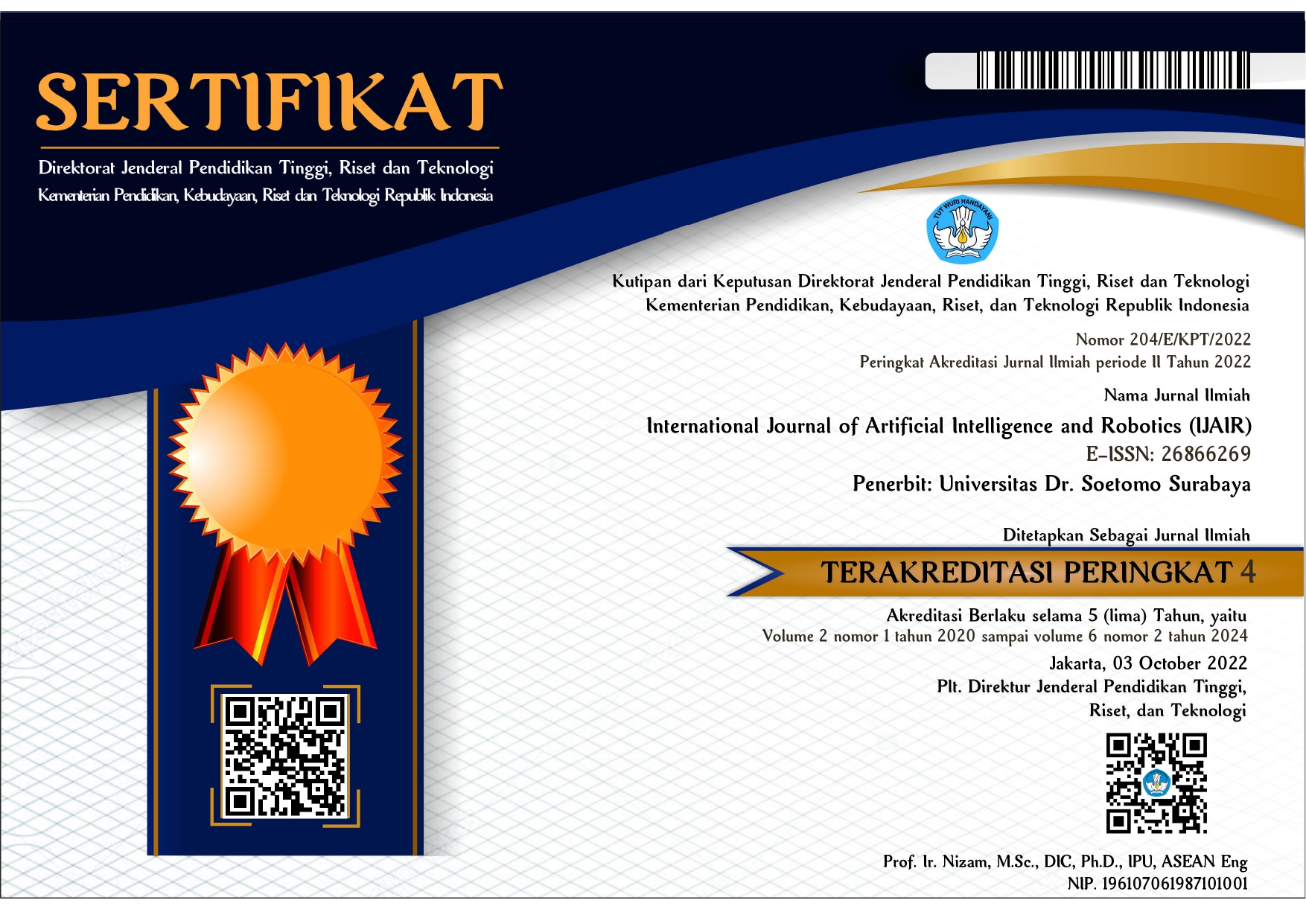[1] G. Zhang, C. Zhang, and H. Zhang, “Improved K-means algorithm based on density Canopy,†Knowledge-Based Syst., vol. 145, pp. 289–297, 2018.
[2] T. Widiyaningtyas, M. I. W. Prabowo, and M. A. M. Pratama, “Implementation of k-means clustering method to distribution of high school teachers,†Int. Conf. Electr. Eng. Comput. Sci. Informatics, vol. 2017-Decem, no. September, pp. 19–21, 2017.
[3] X. Huang and Z. Song, “Clustering analysis on E-commerce transaction based on K-means clustering,†J. Networks, vol. 9, no. 2, pp. 443–450, 2014.
[4] S. Shaik, Indivar;Nittela, S.S.; Hirwarkar, T.; Nalla, “K-means Clustering Algorithm Based on E-Commerce Big Data,†Int. J. Innov. Technol. Explor. Eng., vol. 8, no. 11, pp. 1910–1914, 2019.
[5] S. Chelcea et al., “Pre-Processing and Clustering Complex Data in E-Commerce Domain To cite this version : HAL Id : inria-00000881,†2005.
[6] M. Lutfi, E. Sukiyah, and N. Sulaksana, “Analisis zonasi lahan usaha tambang menggunakan metode K-means clustering berbasis sistem informasi geografi,†J. Teknol. Miner. dan Batubara, vol. 15, no. 1, pp. 49–61, 2019.
[7] I. S. Febriana, N L ; Sitanggang, “Outlier Detection on Hotspot Data in Riau Province using OPTICS Algorithm,†in IOP Conference Series: Earth and Environmental Science.
[8] D. F. Pramesti, Lahan, M. Tanzil Furqon, and C. Dewi, “Implementasi Metode K-Medoids Clustering Untuk Pengelompokan Data,†J. Pengemb. Teknol. Inf. dan Ilmu Komput., vol. 1, no. 9, pp. 723–732, 2017.
[9] T. Beer, Anna; Lauterbach, Jennifer; Seidl, “MORe++: k-Means Based Outlier Removal on High-Dimensional Data,†in Similarity Search and Applications, Springer, 2019, pp. 188–202.
[10] P. O. Olukanmi and B. Twala, “Sensitivity analysis of an outlier-aware k-means clustering algorithm,†2017 Pattern Recognit. Assoc. South Africa Robot. Mechatronics Int. Conf. PRASA-RobMech 2017, vol. 2018-Janua, no. September 2018, pp. 68–73, 2017.
[11] N. Idham, “PENERAPAN OUTLIER ANALYSIS SEBAGAI SALAH SATU REKOMENDASI KELOMPOK BELAJAR TERHADAP SISWA KELAS 6 DI SDN PAGELARAN II Program Studi Teknik Informatika,†J. Ilm. Komput. dan Inform., p. 199, 2017.
[12] Z. Shaomin, L. Xiangyu, and W. Baoyi, “An improved outlier delection algorithm K-LOF based on density,†Comput. Perform. Commun. Syst., vol. 2, no. 1, pp. 1–7, 2017.
[13] S. Akusisi, D. Pada, and P. Sintering, “Pentapisan dan deteksi data outlier dalam proses sistem akusisi data pada proses sintering,†pp. 1–7.
[14] A. B. Deb and L. Dey, “Outlier Detection and Removal Algorithm in K-Means and Hierarchical Clustering,†World J. Comput. Appl. Technol., vol. 5, no. 2, pp. 24–29, 2017.
[15] M. M. Breuniq, H. P. Kriegel, R. T. Ng, and J. Sander, “LOF: Identifying density-based local outliers,†SIGMOD Rec. (ACM Spec. Interes. Gr. Manag. Data), vol. 29, no. 2, pp. 93–104, 2000.
 Abstract views: 553
,
Abstract views: 553
,
 PDF downloads: 285
PDF downloads: 285
 A LOF K-Means Clustering on Hotspot Data downloads: 0
A LOF K-Means Clustering on Hotspot Data downloads: 0
 A LOF K-Means Clustering on Hotspot Data downloads: 0
A LOF K-Means Clustering on Hotspot Data downloads: 0
 A LOF K-Means Clustering On Hotspot Data downloads: 0
A LOF K-Means Clustering On Hotspot Data downloads: 0
















